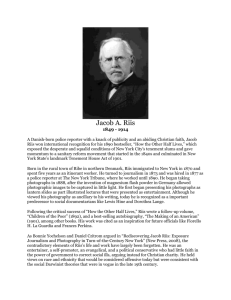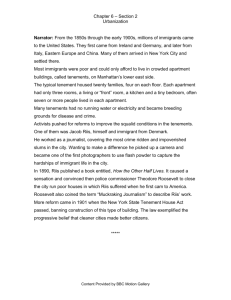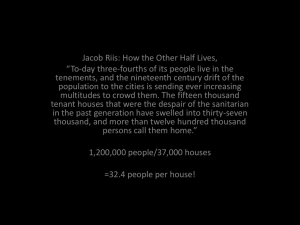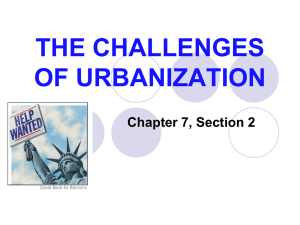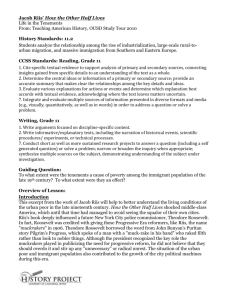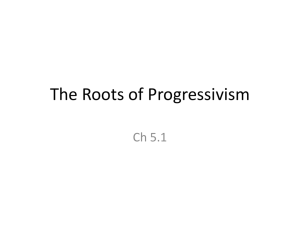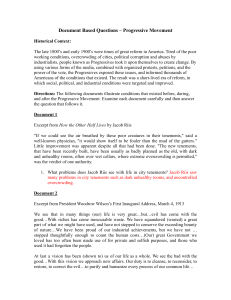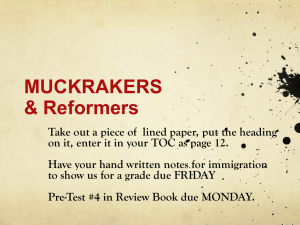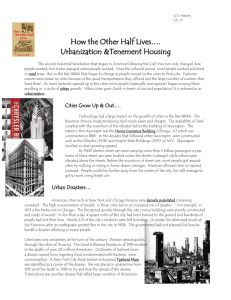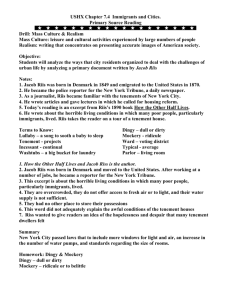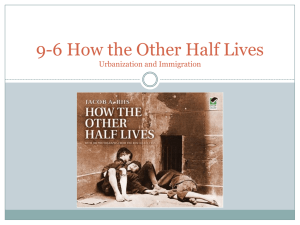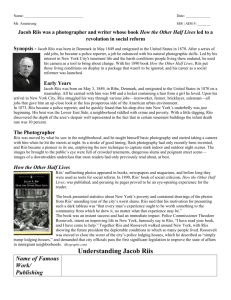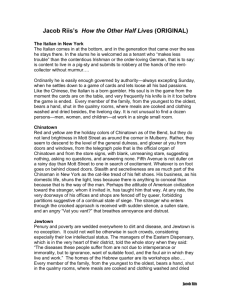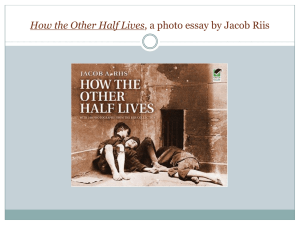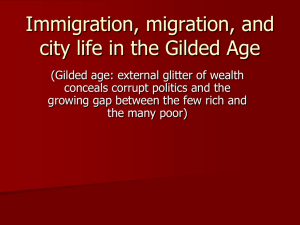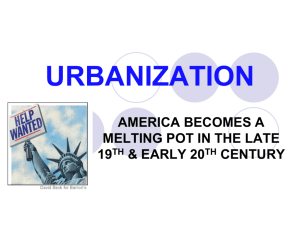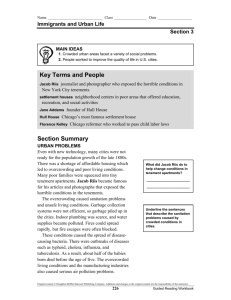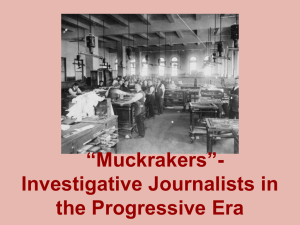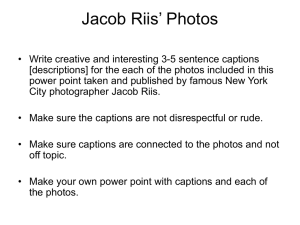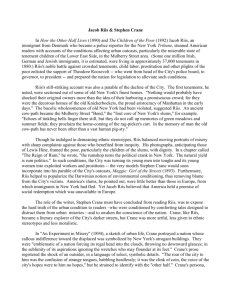How the Other Half Lives
advertisement
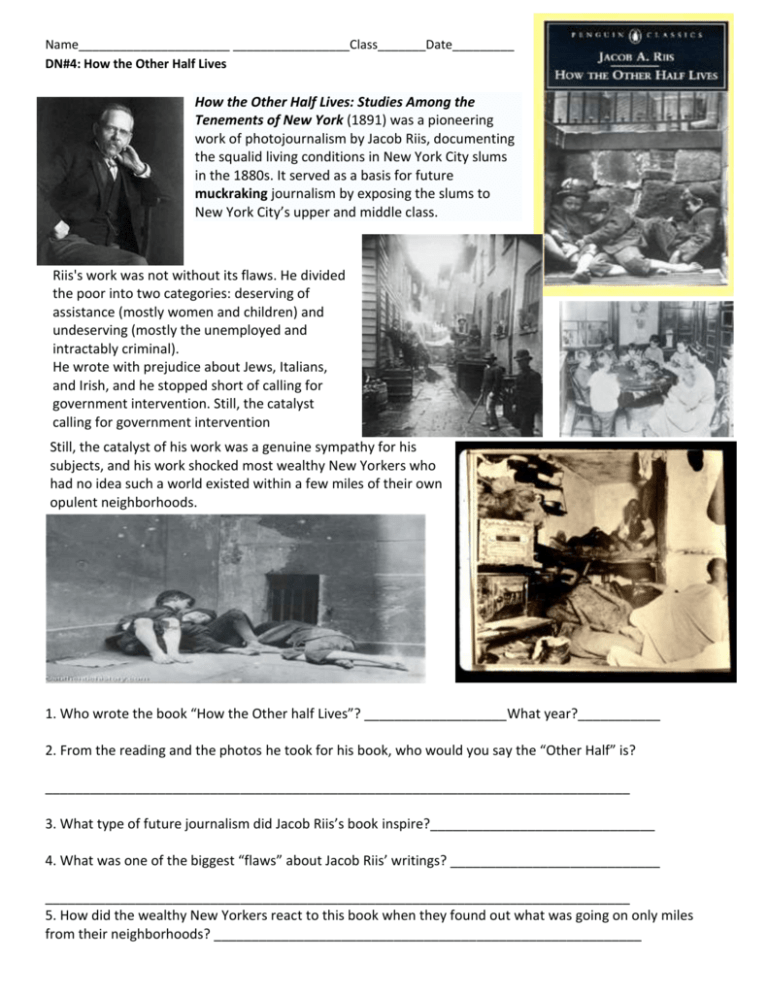
Name______________________ _________________Class_______Date_________ DN#4: How the Other Half Lives How the Other Half Lives: Studies Among the Tenements of New York (1891) was a pioneering work of photojournalism by Jacob Riis, documenting the squalid living conditions in New York City slums in the 1880s. It served as a basis for future muckraking journalism by exposing the slums to New York City’s upper and middle class. Riis's work was not without its flaws. He divided the poor into two categories: deserving of assistance (mostly women and children) and undeserving (mostly the unemployed and intractably criminal). He wrote with prejudice about Jews, Italians, and Irish, and he stopped short of calling for government intervention. Still, the catalyst calling for government intervention Still, the catalyst of his work was a genuine sympathy for his subjects, and his work shocked most wealthy New Yorkers who had no idea such a world existed within a few miles of their own opulent neighborhoods. 1. Who wrote the book “How the Other half Lives”? ___________________What year?___________ 2. From the reading and the photos he took for his book, who would you say the “Other Half” is? ______________________________________________________________________________ 3. What type of future journalism did Jacob Riis’s book inspire?______________________________ 4. What was one of the biggest “flaws” about Jacob Riis’ writings? ____________________________ ______________________________________________________________________________ 5. How did the wealthy New Yorkers react to this book when they found out what was going on only miles from their neighborhoods? _________________________________________________________ More fun practice test questions… can you get them right? 1. This chart shows percentages of immigration from major areas of Europe to the United States from 1880 to 1919. What happened to the percentage of immigrants coming from northwestern Europe during this period? a. b. c. d. There was a steady decrease in the percentage. There was no change in the percentage. There was a sharp increase followed by a sharp decrease in the percentage. There was a steady increase in the percentage. Use the quote and your knowledge of US History to answer the following question. “Today three-fourths of New York’s people live in the tenements…We know that there is no way out; that the ‘system’ that was the evil offspring of public neglect and private greed has come to stay, a storm-centre forever of our civilization. Nothing is left but to make the best of a bad bargain.” - Jacob Riis, How the Other Half Lives, 1890 2. In Riis’ essay, what did he believe to be true concerning the poverty prevalent in the United States during the time period from 1870-1890. a. b. c. d. The problem of tenement life could be solved easily. The American public should not be concerned about urban problems. Lack of public concern had helped create a situation that would be difficult to correct Immigrants were responsible for their own problems.
